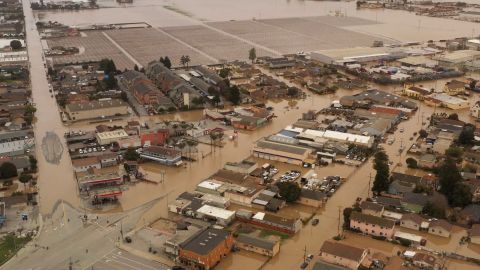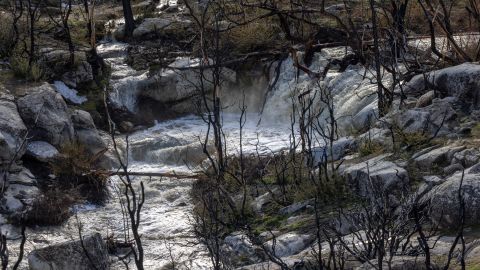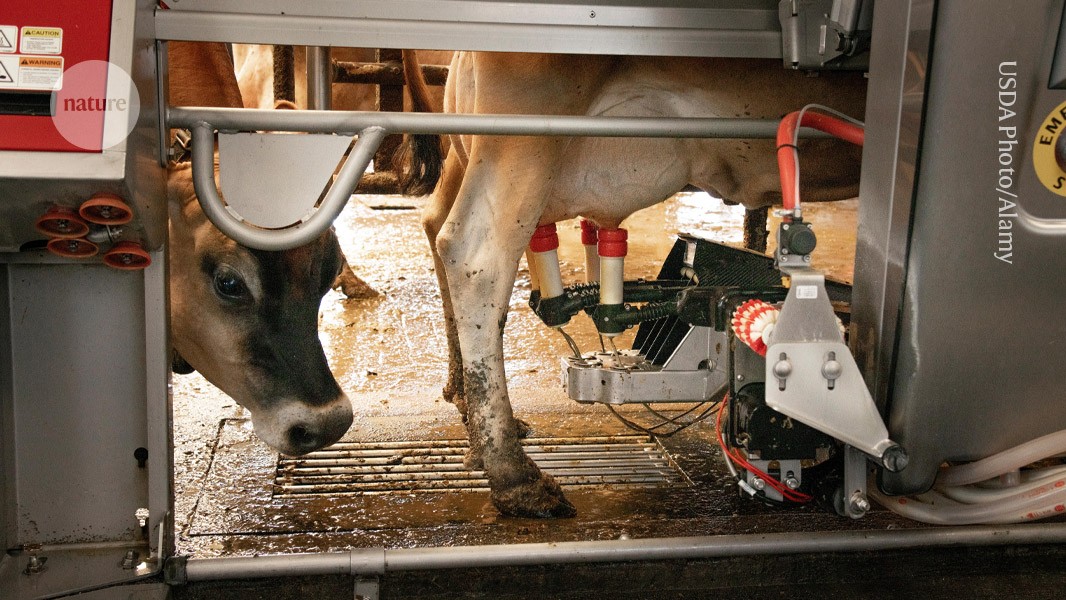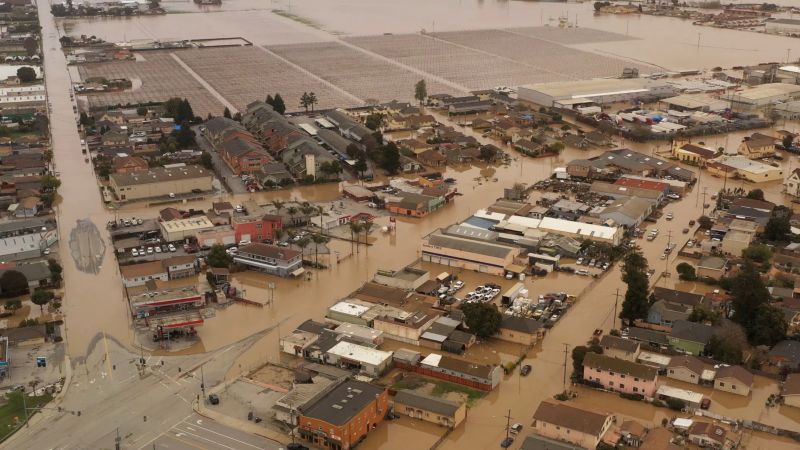CNN
—
Another atmospheric river is creeping into storm-ravaged California, pummeling communities with even more rain and prompting fresh evacuation alerts as residents are still working to recover from the storm that inundated neighborhoods just last week.
More than 30 million people across the state were under flood alerts as the West’s 11th atmospheric river of the season pushed into northern California and aimed towards central and southern California Tuesday, battering ground already saturated with water from the last round of rain and swollen rivers that have overflowed their banks.
The storm comes on the heels of another deadly atmospheric river – a long, narrow band of moisture that can carry saturated air thousands of miles like a fire hose. This round can bring up to 8 inches of rain in some areas, with rainfall coming down as fast as 1 inch per hour.
There are scattered evacuation alerts across multiple counties, including in Monterey County where residents along the Salinas River were ordered to flee. Los Angeles and Santa Barbara counties both issued evacuation warnings Monday night ahead of the atmospheric river’s arrival in the south, with Santa Barbara officials saying the warnings will become orders in the morning.
“The forthcoming rainstorms cause concerns of localized flooding impacts to already damaged infrastructure and increased potential for debris flows and mudslides,” the Los Angeles County Office of Emergency Management said in an email to CNN.
Already, over 600 Californians have taken refuge in 32 shelters across 13 counties and California National Guard troops are out helping with swift water rescues from deluged streets. Numerous roads statewide are closed and a river levee has been breached.
“We weren’t expecting it to be as bad as we’re seeing it,” Monterey Mayor Tyller Williamson told CNN Monday.
Forty of the state’s 58 counties are now under a state of emergency declaration ordered by California Gov. Gavin Newsom and crews positioned across the state are bracing for more overflowing rivers, floods, mudslides and impassable roads.
Santa Barbara Mayor Randy Rowse says the storm is now predicted to be much more significant than originally thought.
“We will wait to see how the intensity plays out before authorizing any evacuations,” Rowse said in an email. “We feel prepared, but will maintain a high level of vigilance.”
The “high-impact” atmospheric river was expected to hit southern California Tuesday afternoon before beginning to taper off during Wednesday, according to the National Weather Service, which warns another round of major and life-threatening flooding is likely along much of the California coast, central Valley and Sierra foothills.
Meanwhile, as California is hammered with rain, another major winter storm is walloping the Northeast, where widespread heavy snowfall is likely from the northeast Pennsylvania and far northwest New Jersey area, through much of New York state and New England.

As intense rain wallops California, the National Weather Service warns that creeks and streams may rise out of their banks and fuel extensive street flooding.
“Lingering impacts from last week`s flooding is likely to get worse with this second storm,” the Weather Service said in a forecast message.
Parts of Monterey County – including Salinas – could get cut off by flooding on the Salinas River, officials said. Those at risk “can and should seek shelter” with family or friends or at one of the county’s evacuation shelters, county officials said.
The Salinas River “is looking at breaching one of the major highways that folks use to get to the peninsula and so we’re just concerned in regards to the highway 68,” Williamson said.
The storm also placed greater urgency on repairing a levee in Monterey County that was breached around midnight Friday by the swollen Pajaro River, forcing thousands to evacuate as water rushed into and flooded the nearby Pajaro community.
“It was 120 feet when the levee initially broke, and now it’s expanded to 300 feet,” Williamson said of the breach, calling it “a significant issue.”
Crews are racing to shore up the breach with a temporary rock and sand wall to slow the flow of water into Pajaro. “A permanent fix will be undertaken once this crisis has passed,” Monterey County officials said.
“The situation is dynamic and evolving,” said Flood Division Manager Jeremy Arrich, as construction crews work to stabilize the levee and engineers focus on short and long term fixes. The flood division is proactively reaching out to other levee managers throughout the region to ensure safety and stability in preparation for the incoming rain.
The recent atmospheric rivers are just the latest to inundate California after an onslaught of similar storms in December and January also resulted in deadly flooding – and it isn’t stopping here.
After this latest atmospheric river sweeps through California by Wednesday, the state will only get a few days of relief from heavy precipitation before another atmospheric river arrives next week, according to the National Weather Service.

With this new wave of storms pummeling areas already buried by heavy snowfall from the past two weeks, forecasters have warned that the melting snowpack will play a role in prolonging flooding over the upcoming days.
Snow melt at elevations below 5,000 feet could particularly worsen the flooding in the Sierra, where accumulations of 3 to 5 feet are likely above 7,500 feet, the National Weather Service said.
“Heavy rain absorbed into the particularly deep snowpack in the Sierra Nevada along with heavy snow, measuring in feet above the 7500 feet, will further compound ongoing snow load impacts and issues,” the National Weather Service said.
That doesn’t necessarily mean the rain will fully melt the snow pack away.
During the last storm, the deep snow pack mostly absorbed more water than it melted, UCLA climate scientist Daniel Swain said.
“There is more snow water in the southern and possibly central Sierra than there has ever been at this time of year and possibly at any point during the year especially in the southern Sierra. So there is a whole hell of a lot of water up there right now stored in the snowpack,” Swain said.







More News
Putin’s War Will Soon Reach Russians’ Tax Bills
Three Questions About Politics and the Campus Protests
Daimler Truck Workers Reach Deal and Avert Threatened Strike in North Carolina